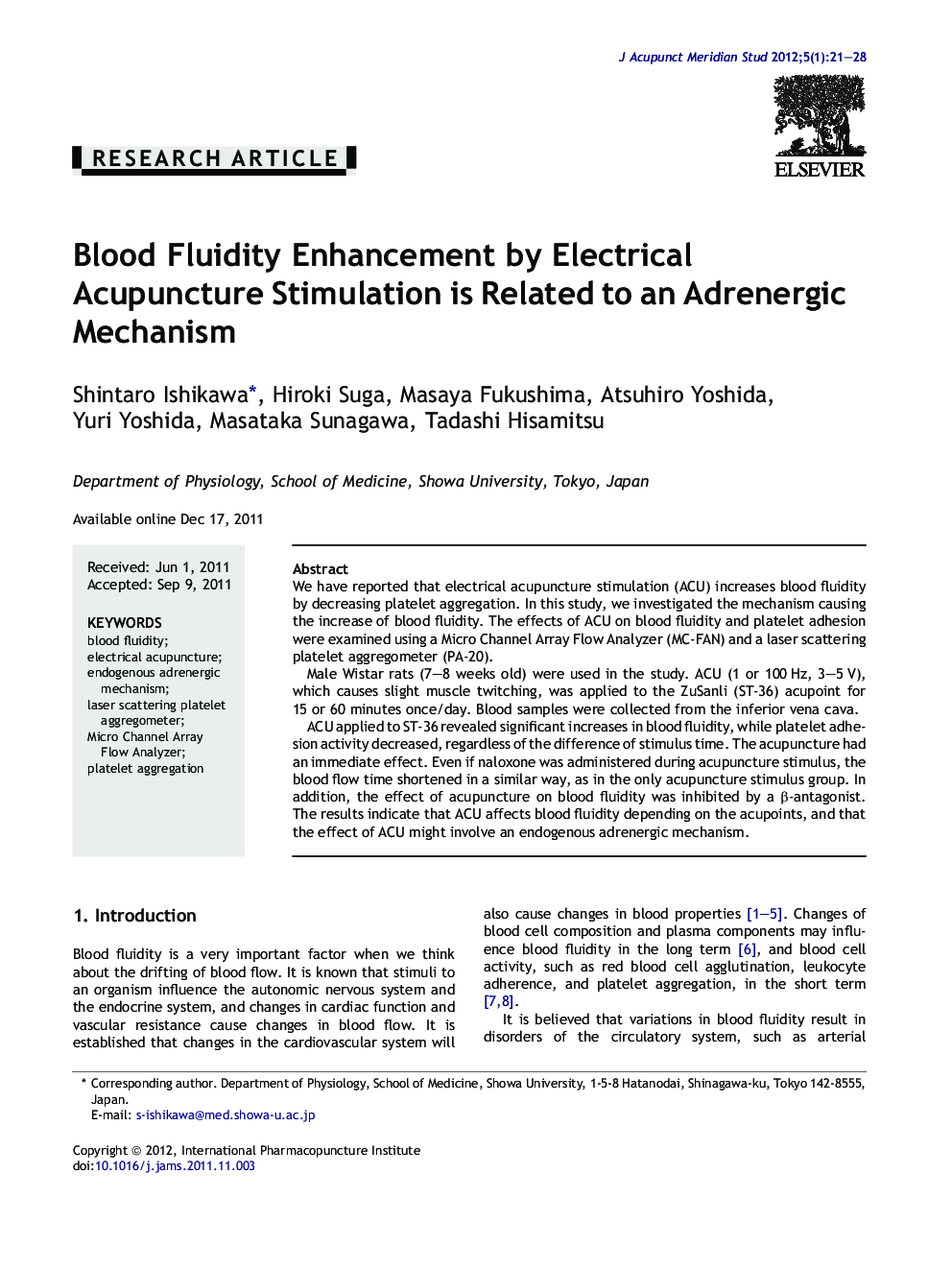| Article ID | Journal | Published Year | Pages | File Type |
|---|---|---|---|---|
| 3098793 | Journal of Acupuncture and Meridian Studies | 2012 | 8 Pages |
We have reported that electrical acupuncture stimulation (ACU) increases blood fluidity by decreasing platelet aggregation. In this study, we investigated the mechanism causing the increase of blood fluidity. The effects of ACU on blood fluidity and platelet adhesion were examined using a Micro Channel Array Flow Analyzer (MC-FAN) and a laser scattering platelet aggregometer (PA-20).Male Wistar rats (7–8 weeks old) were used in the study. ACU (1 or 100 Hz, 3–5 V), which causes slight muscle twitching, was applied to the ZuSanli (ST-36) acupoint for 15 or 60 minutes once/day. Blood samples were collected from the inferior vena cava.ACU applied to ST-36 revealed significant increases in blood fluidity, while platelet adhesion activity decreased, regardless of the difference of stimulus time. The acupuncture had an immediate effect. Even if naloxone was administered during acupuncture stimulus, the blood flow time shortened in a similar way, as in the only acupuncture stimulus group. In addition, the effect of acupuncture on blood fluidity was inhibited by a β-antagonist. The results indicate that ACU affects blood fluidity depending on the acupoints, and that the effect of ACU might involve an endogenous adrenergic mechanism.
